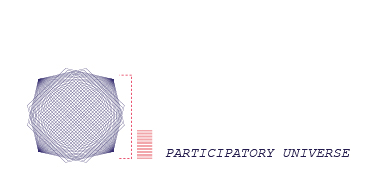


DECOHERENCE
An answer to those questions was proposed in 1970 by H. Dieter Eh of the University of Heidelberg. He showed that part of Schrodinger’s equation itself was inherently unacceptable. The notion of ideal superposition is coherent. His research group found out that the statuses of coherent superpositions can be sustained for only as long as they are out of the sight of an observer. However, the fallen card is constantly collided with by microscopic objects, such as snooping air molecules and photons, and these events cause the destruction of the state of the superposition, resulting in the collapse of the wave function; it is like the environment around the status of the subject acts as an observer.
As a simple example, let’s assume that one of your friends observes the outcome of the status of the card without telling you whether it fell down to the right or left side. According to the collapse theory, your friend’s observation, the measurement of the event, collapses the superposition into a single direct outcome. At the moment your friend observes the card, your description of the card transformed into the classical representation of your ignorance of what she saw. On the other hand, according to decoherence theory, interaction with extremely tiny elements in the air functions in the same manner as a human observer, and thus even before your friend sees the card, the card will be in the status of collapse. And, this is why we cannot observe quantum superpositions in our everyday life. Our reality is much more whimsical and magical then we think. Large objects, like you, also possess superposition. You never observe this phenomenon because you are always interacting with your surroundings. According to H. Dieter Eh, microscopic objects are more easily isolated from their surroundings, so they retain their quantum behavior.
The corresponding answer to the second question is, as a result of the several sets of calculation, the classical states such as face-up and face-down are the most vigorous against the interfering effect of the environment. Among other numerous alternatives, that is why we regularly spot those typical results; during the interaction with surroundings, any alternative status of the superposition is discarded but two strong statuses will remain, which are face-up and down.
Today, there are several interpretations of quantum phenomena. The pairing of Many-Worlds interpretation and the decoherence theory is probably one of the most significant interpretations that connects the dots of the major finds of great theorists, and gives us a chance to look inside of the realm of the microscopic, from the scale of 10−10 m, to the universe where more than a hundred billion massive systems of Galaxies interact with each other. “Each and every potential outcome embodied in a wavefunction sees the light of the day; the daylight each sees, however streams through its own separate universe. In this approach, the Many World Interpretation, the concept of “the universe” is enlarges to include innumerable” parallel universes” - innumerable versions of our universes- so that anything that quantum mechanics predicts could happen, even if only with minuscule probability, does happen in at least one of the copies” (Green, 205). “The decoherence interpretation is boldly presented in order to apply quantum theory to the entire universe, from beginning to end. Presumably no observers were around in the early universe, and no external observers have existed at any time; the universe include everything. Since one can’t deal with the infinite complexity of the universe, one treats only certain aspects and averages over the rest”. ( Green,161).